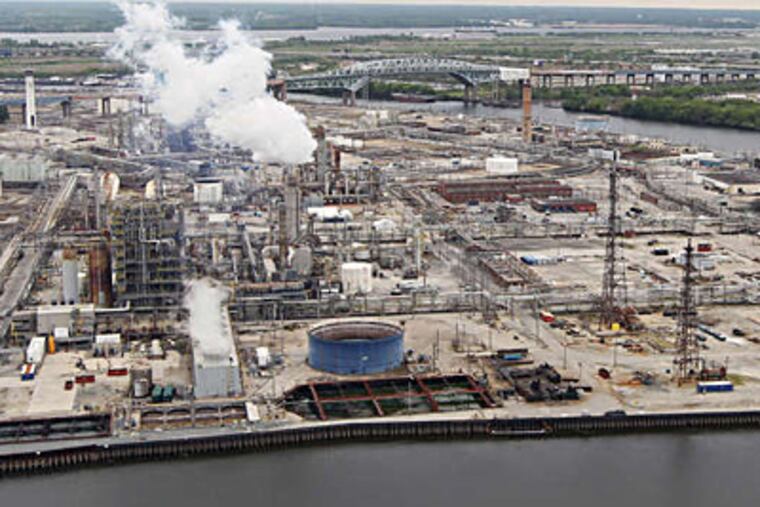Guest column: Hope and reality at Sunoco site
At the risk of sounding callous, my first reaction at hearing that Philadelphia's Sunoco refinery might close was excitement. Yes, it would mean job losses, as many as 900 good blue-collar positions, which are all too rare in this city in the first place.

At the risk of sounding callous, my first reaction at hearing that Philadelphia's Sunoco refinery might close was excitement. Yes, it would mean job losses, as many as 900 good blue-collar positions, which are all too rare in this city in the first place.
Yet all I could think about was the potential. Imagine 1,400 riverfront acres - now given over to hideous distillation towers and storage tanks - cleaned up and converted into something spectacular. Parkland. A second Navy Yard. Or why not an entirely new neighborhood, just two miles south of Rittenhouse Square?
With the refinery out of the way, visitors arriving at Philadelphia International Airport would see something other than the remnants of the city's industrial past as they crossed the Schuylkill. And whatever jobs would be lost when the refinery closed would be more than made up for by the economic activity created in such a huge development project.
But this is, sadly, a wistful fantasy. The far more likely reality is that, if the refinery does shut down, Philadelphia will be burdened with a vast tract of fallow land too tainted by more than 140 years of refining activity to be useful for anything other than industrial purposes.
Yes, theoretically, the technology exists to clean up most any site and make it safe for residential and recreational use, even when the site is the oldest continuously operating refinery in the nation.
"You can redevelop pretty much any brownfield in the country," said Cynthia Brooks, president of Greenfield Environmental Trust Group, a brownfield-reclamation consulting firm. "It's just a matter of how much you're willing to pay to clean it up."
And in the case of the Sunoco refinery, those costs are almost certainly prohibitive.
At 1,400 acres, the refinery covers as much territory as Center City between South Street and the Vine Street Expressway. It's one thing to clean up waste from a few shuttered tanneries and turn it into a two-acre park (as was done in Northern Liberties). It's another altogether to build a mini-city atop soil on which was refined oil for a century before the first meaningful environmental controls were passed.
"The economic reality of these sites is that they are more sensibly used for industrial or certain commercial activities," said Alan Greenberger, deputy mayor for planning and economic development.
The cost of environmental cleanup isn't the only financial barrier to redevelopment. The refinery site lacks basic infrastructure as well: roads, water and sewer lines, a residential-friendly electrical grid.
"This is a city where there are already lots of areas with potential for infill development," Greenberger said, which is a huge understatement, given the more than 40,000 vacant parcels citywide. "Those areas already have transit access, neighborhood amenities, nearby parks. So for the city, those areas are always going to come first."
If Philadelphia were full to the brim, and property values here rivaled those of the Bay area or New York, it might make good economic sense to clean up the refinery site and use it for something other than industry, Greenberger said. But that's obviously not the case in Philadelphia.
All of which means the best realistic option for the refinery is, well, to remain a refinery. Last month, Sunoco entered into exclusive discussions with the Carlyle Group, a private equity manager, to see if they could come to an agreement to run the plant as a joint venture. That's far from a sure thing, however.
Sunoco spokesman Thomas Golembeski said the company remained focused on "keeping the refinery operating and making it a viable source of jobs for people in the region." If that's not possible, he said, an alternative industrial use "would be the most logical next step." He declined to discuss other potential uses, or remediation challenges at the site.
If the refinery does close, not all hope is lost. There are lower environmental standards for industrial and certain commercial uses than for residential and recreational ones, so the site could make good economic sense for some companies. A massive distribution center, say, or perhaps the crude oil refinery could be converted (at huge expense) into a natural gas processor.
Granted, neither is exactly the use urban enthusiasts like myself dream of. But consider the alternative: a large tract of contaminated land, fenced off and empty, for who knows how long.